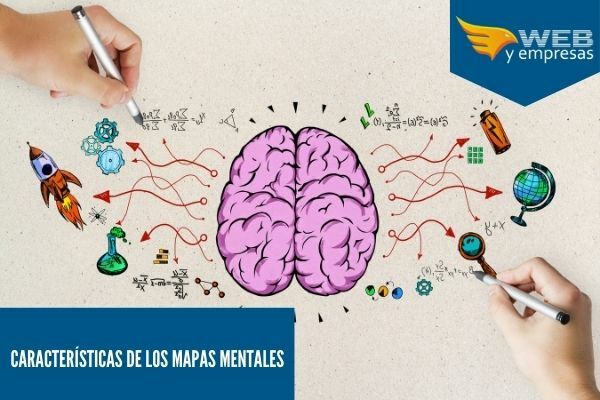A mind map is a study tool that allows your brain to understand and retain information easily and quickly. These are designed to help you think, gather knowledge, remember, and create ideas.
The visual basis of mind maps helps distinguish specific words or ideas, often with colors and symbols to make it much easier.
Advertisements

In this article you will find:
Characteristics of mind maps
Mind maps can be created in many different waysHowever, they all share the same fundamentals and characteristics.
Advertisements
1. Central theme
The central theme of a mind map is placed right in the center of a blank page. Its about title of all work, which must deal with something particular, be it a problem to be solved or simply a thought on a particular topic.
This is done in order to create a thought through the visualization of images that are taking shape in the head. An example of this would be that several colored balloons together can make us think of a fair or a birthday.
Advertisements
2. Associations
The associations they start directly from the central theme, and are called first-level associations. They are the ones that give way to the creation of second-level, third-level associations and so on.
With these, the brain is intended to think about something particular through imagination and the comparison between one thing and another. When associations are created, connections are made that are essential for remembering and thinking.
Advertisements
3. Curve lines
Curved lines are those that are drawn to create the associations, and thus bring specific ideas from the central theme.
Curved lines are used instead of linear lines because the brain reacts better to these, they achieve more easily capture the required information and make the associations much faster and more effective.
Advertisements
4. Keywords
Mind maps have complete but well summarized information. Instead of phrases, the ideal is to use a single keyword That leads to a quick and useful association between the main topic and the ideas you want to convey.
A single word per association grants greater freedom, creativity, and clarity to the person viewing the mind map.
5. Proximity
The proximity between the associated words and the main topic is important because depending on this length it will be faster and easier get the creation of a thought or main idea on the topic that is being discussed.
6. Number of associations
Although a mind map can have several top-level associations, depending on how extensive the subject is, the brain can only capture a maximum of 7 joint associations.
7. Subtopics
Since the number of first level associations should not exceed 7 for the brain to associate them, it is important to create subtopics, or second and third level associations.
They should be just as short and concise as the top-tier ones. It is important to ensure that the lines of a subtopic exit directly from the curve of a first-level association.
8. Colors and images
The use of color is extremely important in creating a mind map. Research shows that people who use color and images can be more creative in associating ideas.
As far as study is concerned, images and colors allow ideas to linger longer in memory.
Mind maps are an important study tool which is based on technical systems of association of ideas to convey a point, useful results.
Sources and references
- Johnson A. (2018, July) CHARACTERISTICS OF MIND MAPS.
- Jones N. (2020, December) Mind Mapping Basics.


